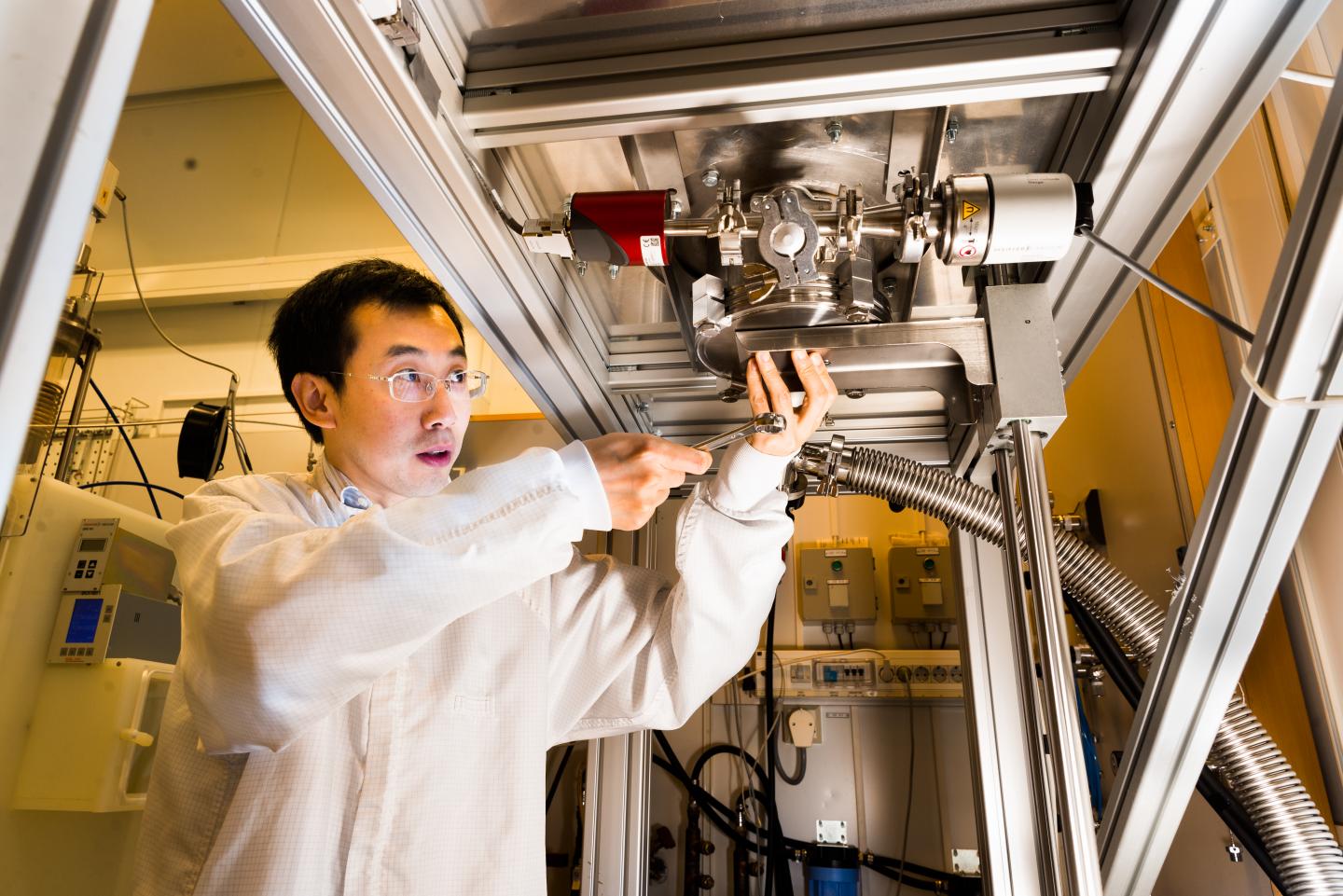
Jianwu Sun at Linköping University inspecting the growth reactor for growth of cubic silicon carbide. Credit: Thor Balkhed/LiU
A combination of natural energy and graphene attached to cubic silicon carbide could yield renewable fuels.
A Linköping University research team has created a method that produces graphene with several layers with the ultimate goal of converting water and carbon dioxide to renewable fuel using the energy from the sun and graphene attached to the surface of a cubic silicon carbide.
In a previous study, the researchers developed a method to produce cubic silicon carbide that has the ability to capture energy from the sun and create charge carriers. However, the addition of graphene, which has the ability to conduct an electric current, would enable a device to be more useful for solar energy conversion.
Recently, scientists have tried to improve the process by which graphene grows on a surface in order to control the properties of graphene better.
“It is relatively easy to grow one layer of graphene on silicon carbide,” Jianwu Sun, of the Department of Physics, Chemistry and Biology at Linköping University, said in a statement. “But it’s a greater challenge to grow large-area uniform graphene that consists of several layers on top of each other.
“We have now shown that it is possible to grow uniform graphene that consists of up to four layers in a controlled manner,” he added.
However, multilayer graphene poses a challenge because the surface becomes uneven when different numbers of layers grow at different locations, resulting in an edge forming a tiny, nanoscale staircase when one layer ends.
The research team was able to find a way to solve this issue by growing the graphene at a carefully controlled temperature. They also showed that the method makes it possible to control how many layers the graphene will contain.
“We discovered that multilayer graphene has extremely promising electrical properties that enable the material to be used as a superconductor, a material that conducts electrical current with zero electrical resistance,” Sun said. “This special property arises solely when the graphene layers are arranged in a special way relative to each other.”
The researchers also demonstrated experimentally for the first time that multilayer graphene has superconductive properties when the layers are arranged in a specific manner.
Superconducting materials are used in several applications including superconducting magnets, electrical supply lines with zero energy loss and high-speed trains that float on a magnetic field.
The study was published in Carbon




